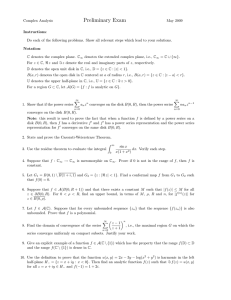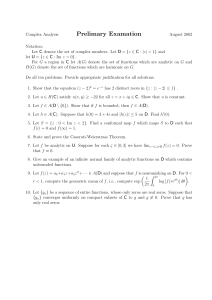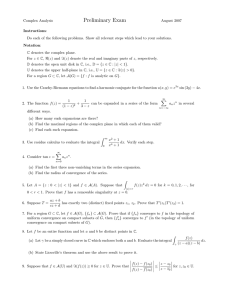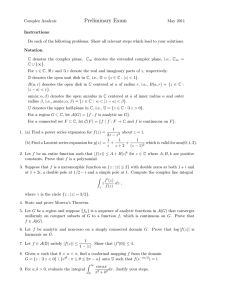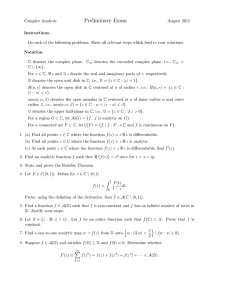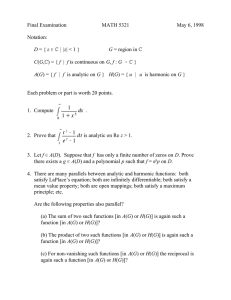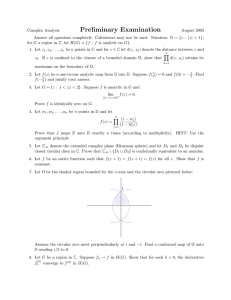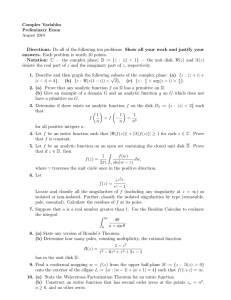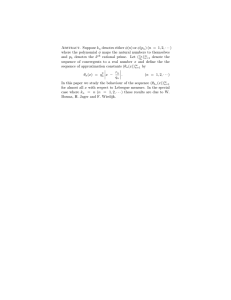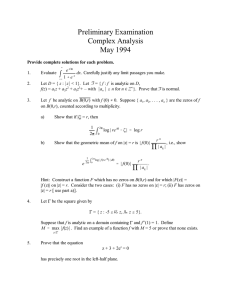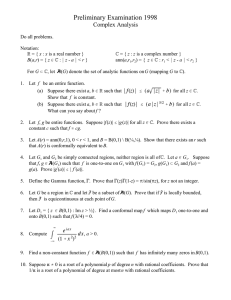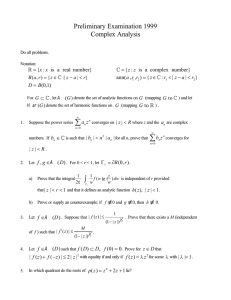Preliminary Exam
advertisement
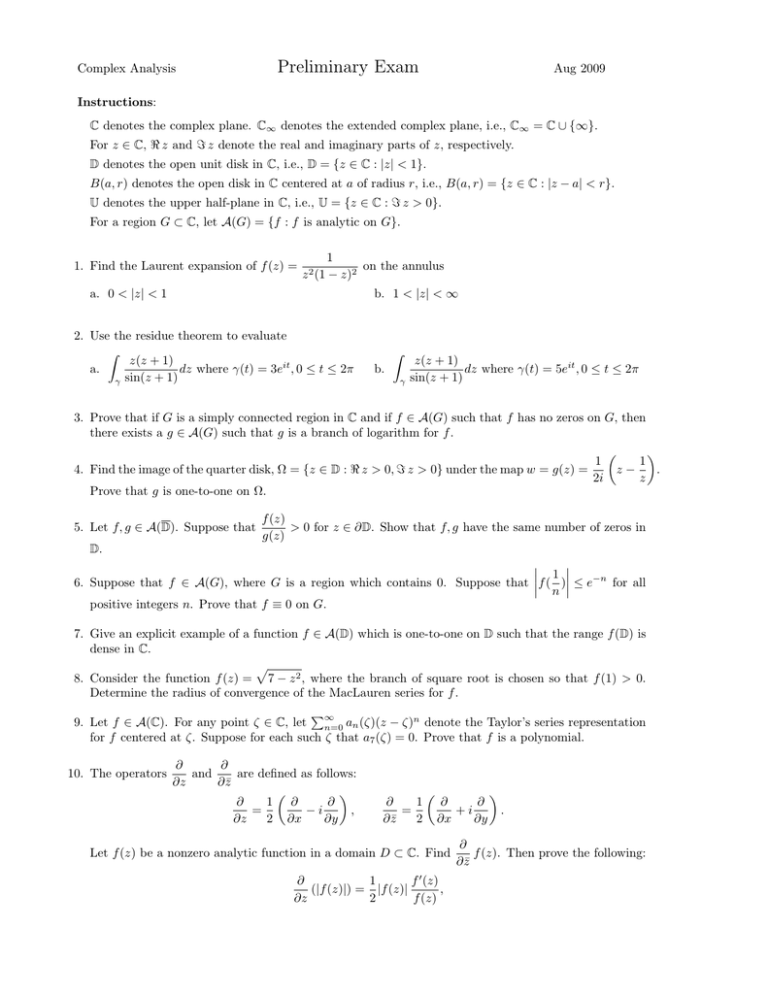
Complex Analysis
Preliminary Exam
Aug 2009
Instructions:
C denotes the complex plane. C∞ denotes the extended complex plane, i.e., C∞ = C ∪ {∞}.
For z ∈ C, < z and = z denote the real and imaginary parts of z, respectively.
D denotes the open unit disk in C, i.e., D = {z ∈ C : |z| < 1}.
B(a, r) denotes the open disk in C centered at a of radius r, i.e., B(a, r) = {z ∈ C : |z − a| < r}.
U denotes the upper half-plane in C, i.e., U = {z ∈ C : = z > 0}.
For a region G ⊂ C, let A(G) = {f : f is analytic on G}.
1. Find the Laurent expansion of f (z) =
1
on the annulus
z 2 (1 − z)2
a. 0 < |z| < 1
b. 1 < |z| < ∞
2. Use the residue theorem to evaluate
Z
z(z + 1)
a.
dz where γ(t) = 3eit , 0 ≤ t ≤ 2π
γ sin(z + 1)
Z
b.
γ
z(z + 1)
dz where γ(t) = 5eit , 0 ≤ t ≤ 2π
sin(z + 1)
3. Prove that if G is a simply connected region in C and if f ∈ A(G) such that f has no zeros on G, then
there exists a g ∈ A(G) such that g is a branch of logarithm for f .
1
4. Find the image of the quarter disk, Ω = {z ∈ D : < z > 0, = z > 0} under the map w = g(z) =
2i
Prove that g is one-to-one on Ω.
5. Let f, g ∈ A(D). Suppose that
1
z−
.
z
f (z)
> 0 for z ∈ ∂D. Show that f, g have the same number of zeros in
g(z)
D.
1 6. Suppose that f ∈ A(G), where G is a region which contains 0. Suppose that f ( ) ≤ e−n for all
n
positive integers n. Prove that f ≡ 0 on G.
7. Give an explicit example of a function f ∈ A(D) which is one-to-one on D such that the range f (D) is
dense in C.
p
8. Consider the function f (z) = 7 − z 2 , where the branch of square root is chosen so that f (1) > 0.
Determine the radius of convergence of the MacLauren series for f .
P∞
9. Let f ∈ A(C). For any point ζ ∈ C, let n=0 an (ζ)(z − ζ)n denote the Taylor’s series representation
for f centered at ζ. Suppose for each such ζ that a7 (ζ) = 0. Prove that f is a polynomial.
10. The operators
∂
∂
and
are defined as follows:
∂z
∂ z̄
∂
1 ∂
∂
=
−i
,
∂z
2 ∂x
∂y
∂
1
=
∂ z̄
2
∂
∂
+i
∂x
∂y
Let f (z) be a nonzero analytic function in a domain D ⊂ C. Find
∂
1
f 0 (z)
(|f (z)|) = |f (z)|
,
∂z
2
f (z)
.
∂
f (z). Then prove the following:
∂ z̄
